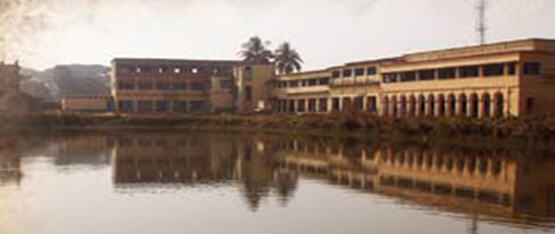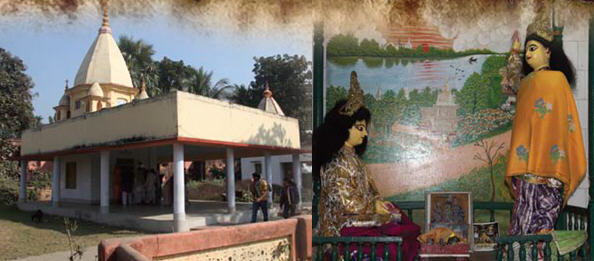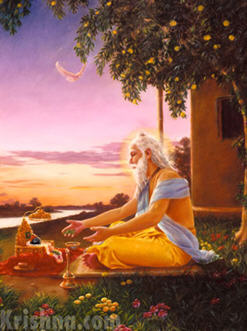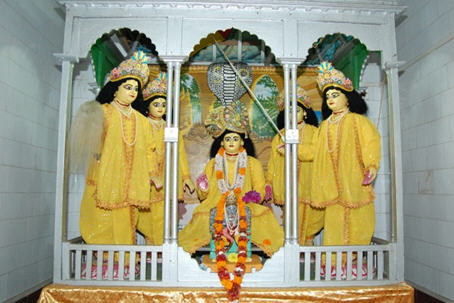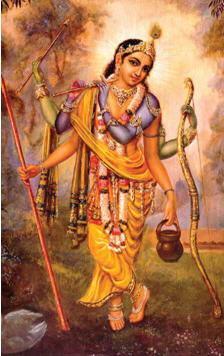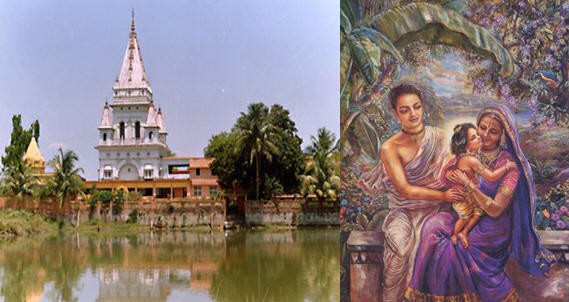
The appearance place of the Lord is known as Yoga-pitha, and is situated at the verycenter of Mayapur. “Yoga” means connection; “Yogapitha” means the place where the Lord connects Himself to this earth ,or descends to this earth. This is the home of Jagannatha Misra. Another meaning of Yoga-pitha is “a meeting place.” At this place all the associates of the Lord meet with Him to participate in His pastimes.
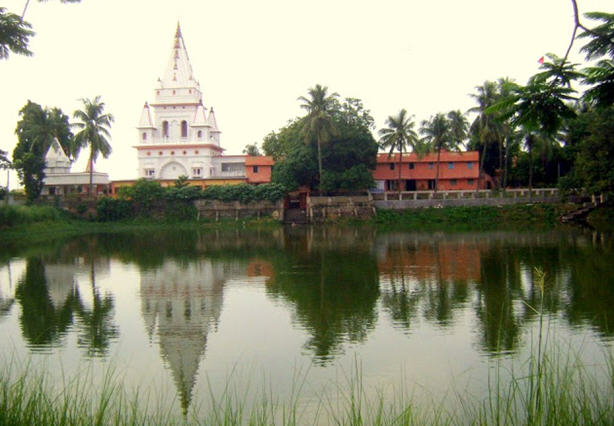
There are two reasons why Lord Gauranga was given the name Nimai by the neighborhood ladies: firstly, because He took birth under a neem tree. The second reason was that prior to the birth of Mahaprabhu, many children of Saci-mata were taken away by Yamaraja (in other words, they had died). Neem tastes bitter; thus the ladies concluded that if they named this boy Nimai, which is the same as neem, then Yamaraja would not take the boy away as He would taste bitter to him.
Darsana times: 8.30-11.00 a.m.and 3.30-8.00 p.m.
Directions: Turn right outside the main gate of ISKCON andproceed down Bhaktisiddhanta Road for one kilometer. Yogapitha is on the right side of the road and has an ornate main gate.
Presiding deities: When you enter the Yoga-pitha compound via the main gate from the road, you will see a shrine dedicated to Srila Bhaktivinoda Thakura on your right side. On the left there is a shrine dedicated to Sakhi Carana dasa Babaji Maharaja, who had helped financially with the construction of the main temple at Yogapitha.
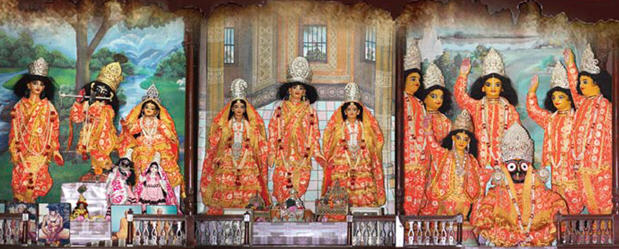
When you proceed further into the property, you turn left and enter the main temple which has a 100 feet-high tower. There are three altars in the temple: on the left altar stand Sri Sri Radha-Madhava, Sri Gauranga Mahaprabhu. On the central altar there are deities of Lord Caitanya as Gaura Narayana with His two wives, Vishnupriya and Lakshmipriya, alongwith a small four-armed deity of Adhokshaja Vishnu. This deity was discovered in 1934 by Srila Bhaktisiddhanta Sarasvati Thakura during the excavation for the temple. Adhokshaja Vishnu was the worshipable deity of Jagannatha Misra, and He sits in front of the deity of Gaura Narayana. He is blackin color and about eight inches tall with four arms holding the symbols of Lord Vishnu: disc, club, conchshell, and lotus.
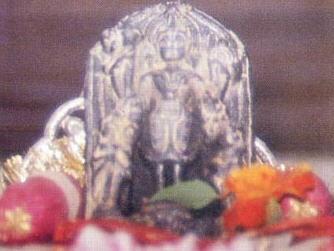
On the sides of this deity are goddesses Lakshmi-devi and Bhu-devi. On the right altar is the Pancatattva, and in front of Them is a deity of Lord Jagannatha.
After walking straight through the darsana area you will see a small houseand a neem tree towards your right. Under this tree Lord Visvambhara took birth on the evening of purnima-tithi during the month of Phalguna (February-March) in 1486. This present tree is said to be a cutting of the original tree. Tomark the birthplace there is a small house next to the tree with deities of Lord Caitanya’s father, Jagannatha Misra, and His mother, Saci-devi, holding baby Nimai on her lap.
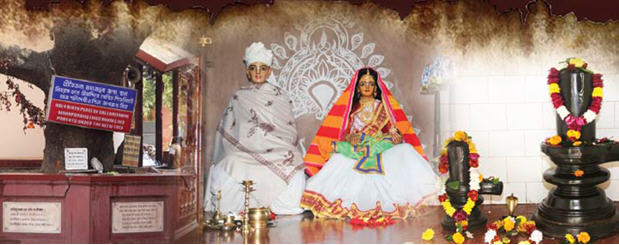
Ten meters (30 feet) north from the appearance place (directly behind the small house) is a small temple with two Siva-lingas. The smaller one on the left is Gopisvara Siva who admits one to the Lord’s service. The larger one on the right is Kshetra-pala Siva who is the protector of the dhama. It is recommended that the devotees pray to these deities at the beginning of their parikrama (or of their stay in Mayapur) that the dhama and gaura-prema be revealed within their hearts.
In front of the main temple sanctuary there is a big kirtana hall, and at the rear of that hall is the temple of Lakshmi-Nrisimha and Gaura-Gadadhara deities.
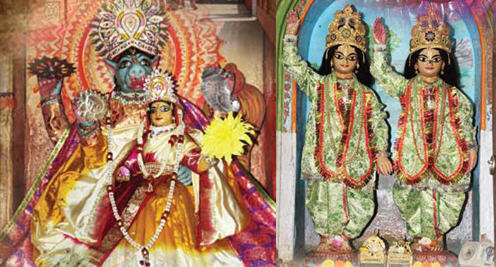
Next to the temple complex, to the southern side of the main temple, is Gaurakunda.
